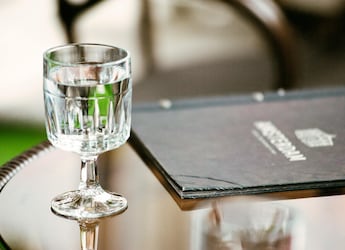A dispute between global coffee giant Starbucks and "Sattar Buksh" (a cafe in Pakistan) is making headlines. Ever since Sattar Buksh was launched, it wasn't just the name of the latter that caught people's attention. Their logo reinforced that echo: a circular emblem with wavy imagery, green hues, and instead of the familiar mermaid, a moustached man. The visual and phonetic resemblance set social media abuzz. Starbucks, which hadn't established outlets in Pakistan then, took objection. It argued that Sattar Buksh's name and look could cause confusion, or at least dilute its trademark. So, a legal dispute ensued.
Also Read: You Won't Believe What Is In This Chinese Cafe's Latest Coffee Concoction
As per some recent reports, Sattar Buksh emerged victorious and managed to retain its business. However, it did end up making a few changes. Find out more below:
How Sattar Buksh Reacted To Starbucks' Objection
Rizwan Ahmad and Adnan Yousuf set up Sattar Buksh in Karachi back in 2013. When Starbucks took objection, the founders said their cafe was built with parody and local culture in mind, not to impersonate. They pointed out differences in logo elements (fonts, figure, colours). They emphasised that the name "Sattar Buksh" has a long cultural legacy in Pakistan. The cafe also blended local food and a mixed aesthetic, and claims that it wasn't trying to be a mirror image. Over time, the branding was tweaked to reduce resemblance. There were disclaimers clarifying there was no affiliation with Starbucks.
Starbucks Versus Sattar Buksh: How It Played Out
Trademark law in Pakistan provides protection for well-known trademarks. It has rules about deceptive similarity (whether one brand might be mistaken for another), and about dilution (when a famous mark loses its uniqueness because of another's use). Starbucks' argument was that Sattar Buksh's name/logo violated these protections: that people might assume association, or that the strength of Starbucks' mark could be weakened.
On the other side, Sattar Buksh leaned heavily on cultural meaning and parody. They claimed their logo and name were not intended to mislead. They stressed the differences: moustached man versus siren, different fonts and colours, menu items beyond just coffee, and visual identity touched by local art and humour. Their defence was that parody and distinct identifying features should be enough to avoid legal liability under Pakistani law.
Also Read: This Cafe In China Serves Coffee That's Both Hot And Freezing Cold
Starbucks Logo and Sattar Buksh logos (original and modified). Diagram Credit: Samina Yaqoob
Starbucks Versus Sattar Buksh Battle Continues To Fascinate People
The dispute prompted Sattar Buksh to modify its visual identity over time, probably to reduce possible confusion. The name stayed. Starbucks' concerns remained raised. The cafe continued its operations, name included, albeit with some tweaks. This episode captured attention not just because of the logos and beverages, but because it touches on bigger questions: how far can parody go? What does it mean for small businesses when global brands enforce trademarks? How much weight does consumer perception carry?
The Sattar Buksh story shows trademark law isn't just about rights; it's about identity, culture, and perception. It has also led to many memes and discussions on social media.
